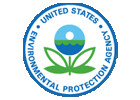Water Main Break – September 26, 2009
Rosemere residents were unwinding from a busy week on Saturday night, September 26, 2009.
As relaxing bubble baths were being drawn, water ceased flowing. Those with shampoo in their hair found this most inconvenient, but employees of the City of Vancouver who were wrestling with a broken water main on 32nd & Q St. had bigger problems.
In inky darkness, water was shooting out of the broken main, creating a sinkhole which overflowed, flooding the streets. A city employee was probing the massive hole to test for depth. Suddenly the edge he was standing on gave way, plunging him into the raging waters. After swirling around in the maelstrom for what seemed an eternity, he was able to extract himself to safer grounds.
Water flowed down 32nd towards R St., turning the alley into a churning creek, flooding a home on the corner. The area was a news clip disaster. By Sunday morning, hard working city employees repaired the broken main and filled the sink hole. A tree root was determined to be the source of damage.
History
Keeping track of over 800 miles of water pipes is a huge job. According to city Water Engineering employee, Tracy Tuntland,
“Water in the City of Vancouver first came into being around 1868. The mains were predominately made of wood until 1874 when the wood mains were replaced with mains made of iron. At that time, the water systems were privately owned.”
Tuntland said that the old wooden water mains were constructed in pieces held together with metal staves like barrels.
City Employee Mike Permin said, “I do know that we received a certificate for having cast iron pipe that is over 100 yrs old (10 or 15 years ago, can’t remember). I’m not sure if it is still in use today or where it was.”
Tuntland continued,
“Over the years as the area grew in population the water system also grew. It wasn’t until 1937 that the water system became a municipality. From 1937 to 1968 the water system grew to serve approximately 60,000 customers with 17 wells and 15 booster pumps. Today the City of Vancouver system serves approximately 210,000 customers through more than 800 miles of pipe, and over 64,000 service connections.”
“Water mains in Vancouver are predominantly ductile iron, and most of the individual lines that run to each property (services) are made of copper tubing. Some old water pipes, Pre 60’s at least, in Vancouver were cast iron and some still are,” according to Permin.
He said that the City determines water pipe replacement based
“upon leak history. (It) used to be a lot on workers’ memory, but now in the electronic age we have computers to document failures. We use fire flow and water demand as well as leak history. We also work in conjunction with transportation projects; we like to replace old mains that will be under new pavement. No priority (is given) as far as age on services. Water services are replaced or repaired if found to be leaking. The system is mostly served with copper services that rarely leak, all other types (plastic, and Galvanized) are considered substandard and are replaced when discovered and as schedules allow.”
The City of Vancouver website states, “Life expectancy for galvanized plumbing is generally estimated at about 15 to 20 years for local water characteristics.”
Current water quality and system stats related to the City of Vancouver water system can be found on the City’s web site at the following links:
City of Vancouver Water Pressure Brochure
City of Vancouver Water Production and Distribution
City of Vancouver Water Quality Reports
City Sewer
Tracy Tuntland of Vancouver’s Water Engineering Dept. said,
“According to one older report the first modern sewers were built in about 1890. The first sewer constructed by a local improvement district (LID 2-S) was built in about 1906.
In about 1945 a network of interceptor sewers was constructed to serve the new Westside Treatment facility. War housing projects constructed many sewers during and after World War II. These neighborhoods and sewers were later deeded to the City many areas have since been re-platted. The Clean Water Act spurred additional construction of trunks and interceptors during the 1970s. A series of capital improvements to the collection and treatment system began in the 1980s and continued through the 1990s. Private developers have also constructed many public sewers throughout the system.
Today the collection system is estimated at more that 700 miles of pipe. About 34 miles of these are pressurized. The service area extends outside of the city limits and covers about 57 square miles. Modern inventory, preventative maintenance, and mapping systems are in place, being developed, and updated. These systems are expected to be key for managing the maintenance of the collection system.”
Modern sewer pipes are mostly plastic or ductile iron.
More information about waster water collection system can be found on the City of Vancouver ‘s website at Services & Public Safety: Wastewater.















![Washington State Water Quality Assessment [303(d)] Washington State Department of Ecology](http://www.rosemerena.org/home/wp-content/uploads/2009/03/ecy_logo.gif)

